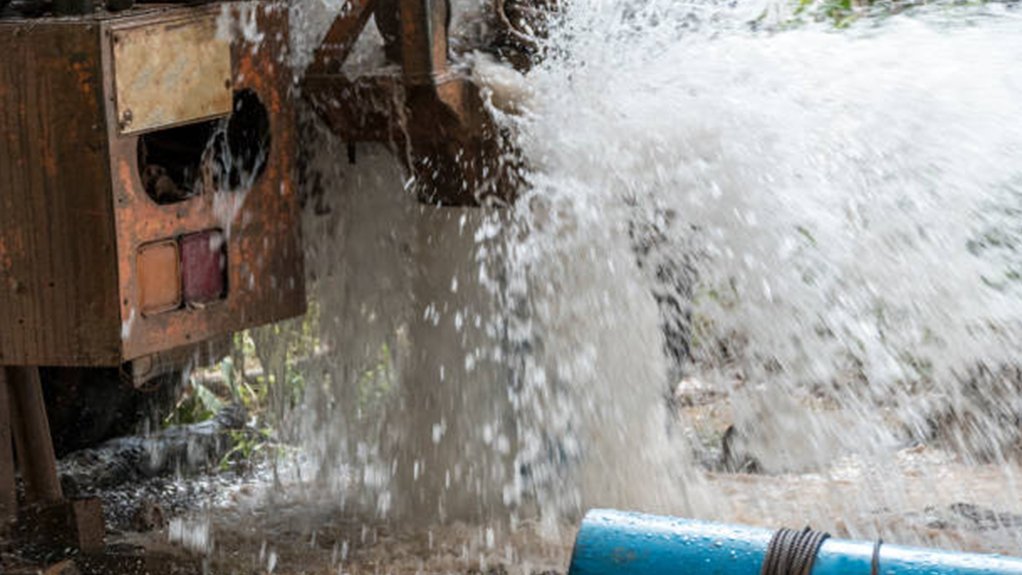Amid challenges of population growth and recurring droughts, the need for swift, cost-effective, and sustainable water provision solutions in South Africa has never been more critical, states environmental consultancy Environmental Assurance (Envass) geohydrological business unit manager specialist Andrè Buys.
The time it takes to establish regional water provision schemes can be the difference between “life and death”, and every person has the fundamental right to access clean drinking water, he adds.
“By acknowledging the fundamental right to clean water, embracing the swiftness of local groundwater solutions and fostering collaboration between public and private sectors, South Africa can secure its water future.”
However, the struggle to ensure this right is exacerbated by infrastructure constraints, and water availability from dams and reservoirs.
The public sector can actively contribute to identifying quicker, more cost-effective and sustainable solutions for water provision, Buys adds.
Groundwater emerges as an invaluable resource in this scenario and, unlike the time-consuming process of establishing vast regional water schemes, the development of local groundwater resources offers a rapid and effective solution, he avers.
Groundwater can help to address the country’s multifold water-related challenges such as antiquated pipelines that fail to meet modern demands.
“In rural areas, where the need is most acute, communities often rely on centralised water points fed by pipelines stretching from large water schemes, dams or reservoirs. For these communities, securing daily water necessitates exhausting journeys over vast distances,” he adds.
However, the development of efficient boreholes emerges as a solution, when considering sustainability and the demands of the future.
Boreholes offer the prospect of localised, reliable water access, eliminating the need for extensive pipeline systems and addressing the pressing issue of water scarcity at its root, Buys explains.
By leveraging scientific techniques, viable groundwater sites can yield abundant water.
This approach, involving drilling, pumping, storage and treatment, proves more practical than massive pipeline projects, he reiterates, noting that identifying suitable groundwater locations allows for direct domestic water supply in rural areas, offering a cost-effective, sustainable solution.
However, the management of these vital groundwater resources cannot be a task for a select few, he says.
“The active involvement of communities in managing these boreholes is a crucial element for success. Residents, intimately acquainted with the needs and nuances of their areas, become the custodians of these resources. Their insights, combined with scientific expertise, ensure the sustainable use and longevity of these groundwater sources.”
Buys emphasises that collaboration between companies and communities can bridge gaps, facilitate knowledge transfer, and accelerate the identification, development and management of local groundwater resources.
Envass, for example, uses geophysical apparatus to determine possible areas where there is potential for groundwater accumulation.
This is done by considering the regional water levels, as well as geological and geohydrological features in the underlying areas, which, in turn, enables scientists to create a conceptual model of the terrain.
Buys adds that the geophysics assists in identifying faults, dykes and geological contact zones, where weathered areas and fractured bedrock occur, ultimately resulting in water accumulation.
“Envass collaborates with drilling contractors and pump test companies to pinpoint high groundwater potential areas. This leads to the drilling of essential boreholes, followed by pump tests to determine sustainable yield recommendations. These processes adhere to scientific methodologies and use extensively tested software,” he explains.
The private sector, meanwhile, has also actively supported communities by offering school sponsorships, electricity and housing.
“It can also contribute to groundwater infrastructure near these areas,” Buys suggests.
He notes that water management and regulatory entities oversee water distribution in South Africa, and it is their responsibility to ensure clean and adequate water supply for domestic use.
“Using groundwater sources can alleviate the strain on existing water management systems,” Buys emphasises, noting that, to enhance this approach, investments in expert-driven drilling, improved maintenance and robust monitoring programmes are crucial.
Envass has played a pivotal role in assisting clients with their environmental needs, implementing monitoring and management programmes. “We have collaborated closely with regulatory bodies in mines, municipalities and industrial sectors, ensuring strict adherence to all legal requirements,” he concludes.
Edited by: Nadine James
Features Deputy Editor
EMAIL THIS ARTICLE SAVE THIS ARTICLE
ARTICLE ENQUIRY
To subscribe email subscriptions@creamermedia.co.za or click here
To advertise email advertising@creamermedia.co.za or click here

















